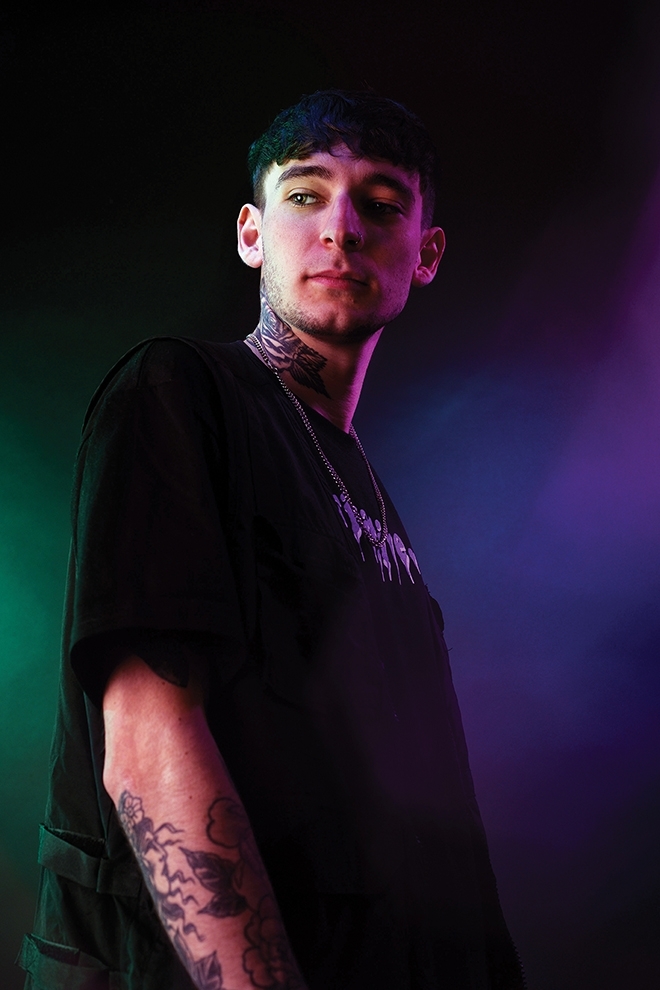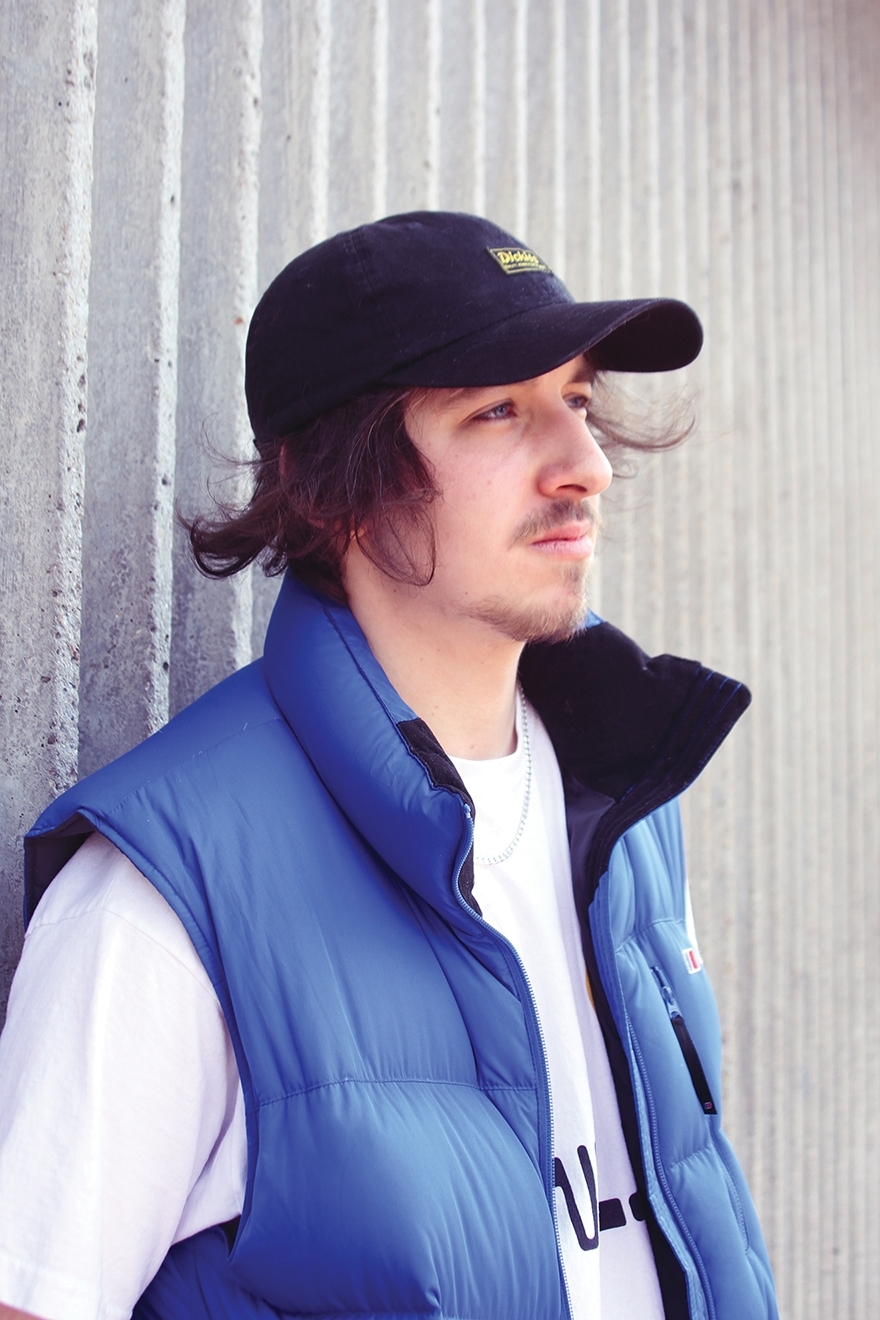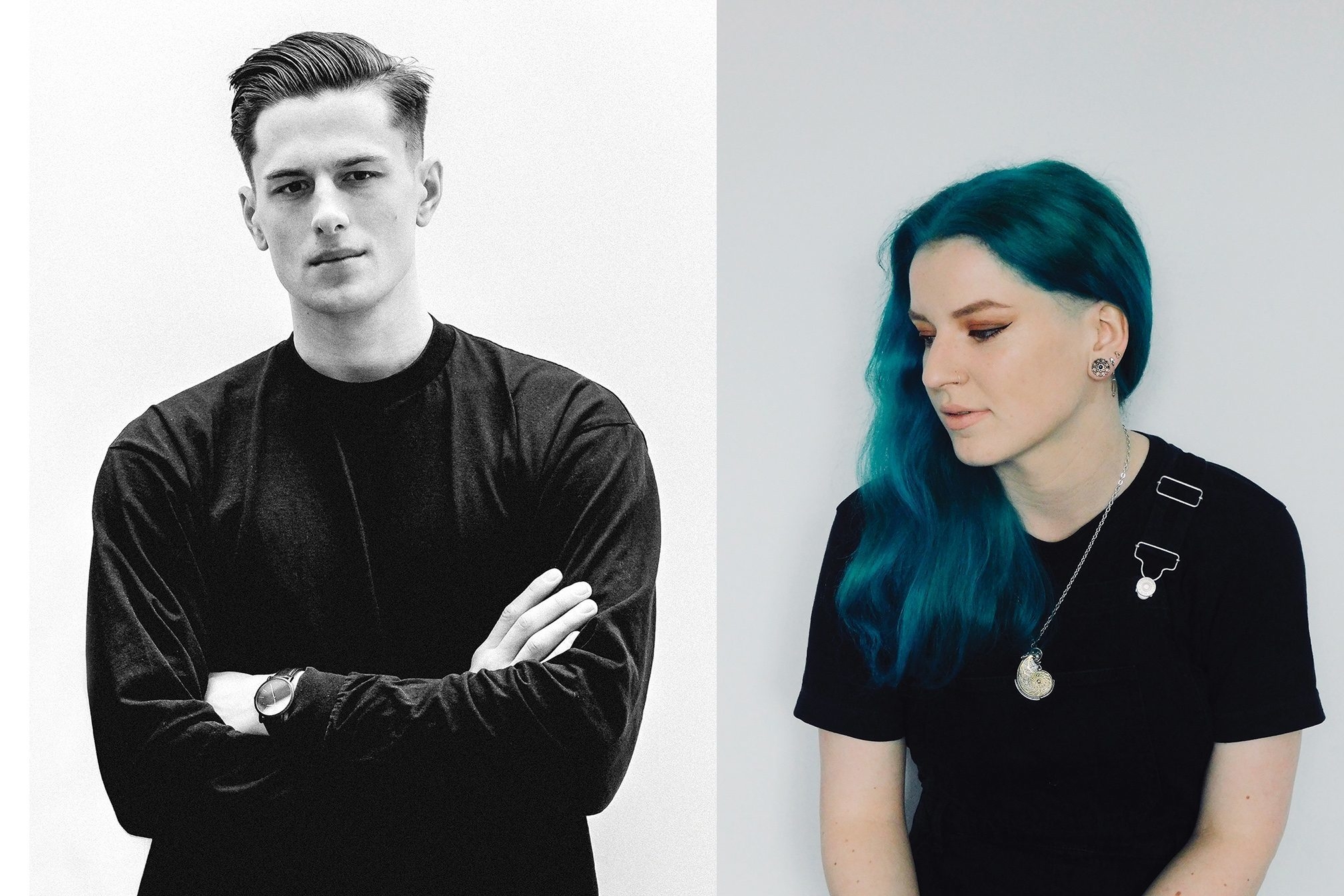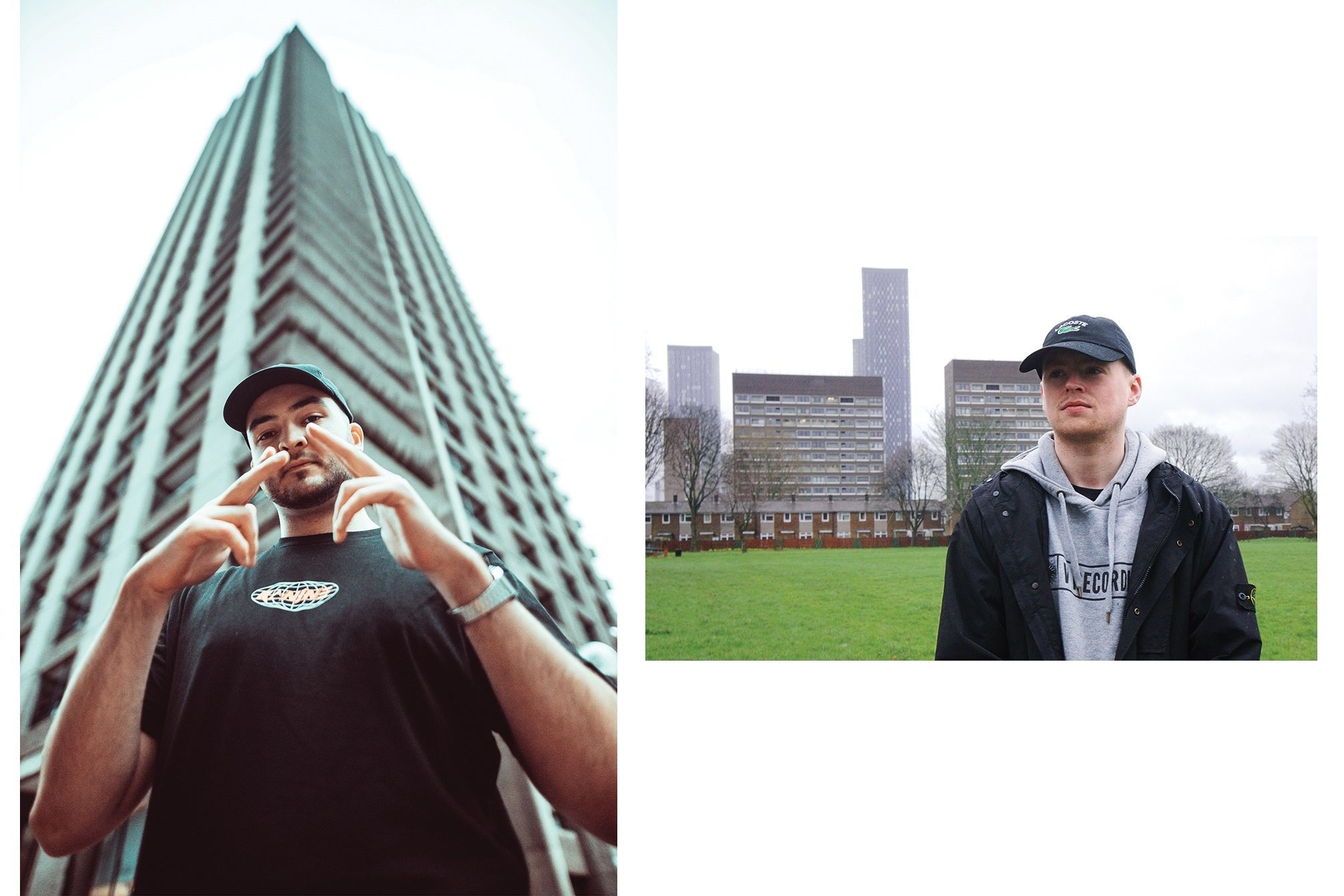 Blog
Blog
How young artists are transforming drum 'n' bass
A new generation of d'n'b stars are changing the game
Right now, young artists are rising up the ranks to headline status in drum ’n’ bass at a phenomenal rate, there are more d’n’b summer festivals than there ever have been and the genre has its largest, most active online community since the forums in the mid-2000s. A new chapter is being written in drum ’n’ bass right now, and it’s being written by a new generation of fans and talent.
Take the case of Jay Carmen, aka AC13. Before October 2018 no one knew him under that name. Then he uploaded his first tracks to SoundCloud. He didn’t think they were ready for public consumption, but his girlfriend at the time convinced him it would be a good idea, so he gave it a whirl and shared them on the Facebook group DNB Talk. Within weeks his DJ schedule was packed. Within months he’d had various notable releases on established labels. By October 2018 he was on his first headline tour of New Zealand.
Today, still less than 18 months after that initial upload, he’s become a name in drum ’n’ bass capable of packing out clubs across the UK and beyond, and has quit a burgeoning career in video production to go full time in music. He’s 20 years old.

“The support and encouragement I had was enough to make me think ‘fuck this’,” grins the Bristol-based artist who’s heavy in tattoos, enthusiasm and basslines. “I dropped everything for music. Everything. I was broke. I’ve never worked so hard in my life, it was fucking intense, but it’s so worth it.”
Hurled into headline status at the flick of a gunfinger, Jay’s in good company. Take the case of Rotterdam’s Jonathan Kievit, aka IMANU. Active since 2016 and previously known as Signal, he’s released on Deadmau5’s Mau5trap, Critical Music, Ram Records and Monstercat, and collaborated with artists such as What So Not and Noisia. He’s 21.
“I was just starting university and was getting quite a few bookings even before my EP on Critical came out,” says Jonathan. Online he’s sharp, mischievous and forthright. In person he’s well-dressed and a little quieter and more philosophical. “I thought, ‘Maybe if it’s this busy before the EP comes out, I’ll be able to do this for a living?’ The EP dropped, it was No 1 on Beatport and things took off from there. I quit university straight away. I guess it’s going OK…”
There are many other stories of things ‘going OK’ for new artists. More than d’n’b has seen before. And it’s global: IMANU’s stomping ground of The Netherlands is rife with new-gen artists ranging from studious sonology graduate Buunshin to liquid new gun DJ Leniz. Austria boasts young agenda-setters such as Halflow and Phentix. France is enjoying its first real en masse d’n’b movement with young acts such as Skylark, The Caracal Project, Trial and Monty all under 25 and all making international scene headlines. Meanwhile, across the Atlantic young acts like Flite, Echo B, Klipee and Winslow are all beginning to bring new energy to d’n’b in North America.

Closer to home and you can take the case of the entire city of Manchester. Thanks to community-based platforms such as Bloc2Bloc there’s an explosion of new talent from the city. Bou and Indika are prime examples. Bou’s made such an impression he’s collaborated with some of the genre’s most-rated heavyweights such as High Contrast and Mefjus. Meanwhile, DJ Indika’s mixing skills caused Chase And Status to book her for their RTRN II Jungle shows. Mixmag witnessed both their skills in November 2019 at London mega-venue Printworks for a multi-genre rave by prominent bass music platform CruCast, and we were blown away. Besides legends such as Randall, Die, DJ Q and Jamie Duggan, almost the entire line-up was new generation across all genres. The second room was exclusively acts on the fun side of their mid-20s. The intensity of headliners Bou and Indika’s sets – plus the rowdy energy from the wall-to-wall crowd – was another perfect example of the genre’s freshest protagonists writing this new chapter. These aren’t young pretenders; Bou’s mixing style is reminiscent of a young DJ Hype, switching away with subversive surprises and specials. Indika’s set, meanwhile, was a dubplate odyssey traversing subgenre continents we didn’t know existed. More recently, Indika has become part of Bloc2Bloc’s Ladies Radio platform where more new-gen female artists will be following her accelerated rise. Key artists to look out for include Kaz, J3nko and Lady Elusive.
“All these artists are in their teens to mid-20s. They’re much more focused and determined from the off. It’s not like getting a set of decks and seeing where it goes,” says Joe Perry, CruCast founder. As a promoter and artist manager he’s not only noticed the new-generation talent surge, but also a change in their mindset. “They know where they want to be, which parties they want to play and labels they want to release with,” he says.
Joe goes on to discuss the wider aspect of the industry, and observes that behind the scenes there are just as many young people becoming managers, agents and promoters. “I’ve noticed a lot of new promoters coming up,” agrees Dutta, another young Manchester artist who’s been making significant waves in the last two years but has been active for five years since his first release aged 18. “These guys are handling things correctly, they’re paying, they’re promoting things properly, they’re very professional. Honestly, it’s a breath of fresh air.”
“The promoters also DJ and make music themselves, they’re creating little local scenes,” adds Stompz, who’s part of a thriving one in Newcastle alongside acts like Skantia, Nectax and Kastro. “It’s great for everyone – I can see it growing and bubbling. I imagine it’s how it was back in the day when Ray [Keith] and all them guys were twenty-odd. It’s another part of the cycle. I think we were missing that for a bit, but there is a huge concentration of young people into this now. And that draws a bigger crowd and more inspiring people and it keeps growing.”

The idea of younger artists and promoters attracting younger crowds is an interesting discussion point with everyone we speak to. With a new generation of ravers comes a new generation of headliners and champions. The end of Andy C’s lifelong run of Best DJ awards last year is an example of this. But does age matter if you’re still able to annihilate a dancefloor?
“No, if you’re smashing it, you’re smashing it,” states Kanine, who was crowned Best Newcomer at the 2019 Drum&BassArena Awards. Now 22, Kanine emerged in 2016 and made a name for himself in jump-up before things went ballistic in 2018. He’s collaborated with the likes of P Money and Killa P, and is part of Distress Signal with two other exciting new artists, Simula (aged 25) and K-Motionz (20). “But young people do relate to music made by people the same age. We’re fresh out of the raves, we speak for the younger ravers, the people going to the clubs every weekend because that was us literally a few years ago so it is a different relationship with the crowd.”
IMANU isn’t sure it’s as simple as that. “I wasn’t a raver. When I listen to music I don’t care about the age of the person making it, and with DJs I just want to see people playing their best music whether they’re 18 or 48,” he says. “But maybe with DJs there is more identification with younger artists. Some of the older guys turn up in their T-shirt and jeans, they look bored, maybe not so connected. But if they’re playing good music will you care enough to leave the dancefloor?”
If your answer is yes, you’re not doing d’n’b right – and you’re likely to be disappointed at most raves; for all the new talent we’re experiencing, drum ’n’ bass is still replete with active pioneers who created and cultivated the genre 30 years ago, and a whole army of talent from all ages in between. But there’s an additional twist in this new generation tale: the genre has reached an age where there’s a different dynamic and a mutual respect between the elders and youngest contributors.
“Maybe there is a kind of father and son thing?” ponders Ray Keith, certified jungle originator. “We can be like ‘Come on, sort your shit out!’ We’ve made the mistakes, so it’s our responsibility to help others avoid them. Let’s be real. People don’t show you how to deal with fame, saying the right thing, doing the right thing, over-indulging in drugs and drink. It’s like New Year’s Eve every night when you blow up. A lot can go wrong, so there’s a duty to help the new guys through that. And they need all the support we can give them, because this industry is brutal. As quickly as someone comes through, they’ve got to stay on it because someone else has come along. I don’t envy that. I don’t need to worry about the next Ray Keith because I was there at the start. New artists don’t have that luxury.”

Ray’s popular Pyro Radio show is dedicated to breaking new artists, and he’s not alone: fellow genre godfathers Goldie and Bryan Gee have also been consistently proactive with new talent on their labels Metalheadz and V Recordings. Ram Trilogy don and AudioPorn bossman Shimon has mentored and managed many new artists, and was instrumental in the development and rise of another hugely influential new-gen headline heavyweight Benny L. Elsewhere acts who came through in the early-to-mid 2000s such as Ulterior Motive, DLR and Lenzman have all established exciting new labels (Guidance, Sofa Sound and The North Quarter respectively) and have broadened their skills to include A&R and artist development, encouraging and bringing through young artists. Noisia Radio has also been an essential go-to trove of new talent since 2015 and will be until the Dutch group split at the end of this year (which in itself is another sign of big changes in the genre). Another go-to source for new talent that isn’t set to stop business any time soon is YouTube channel/label Skankandbass. Dedicated to breaking new-gen acts, many essential new names got their first big break there including Grey Code, Particle, Klinical, Data 3 and leading female artist on the liquid side of d’n’b, Dilemma.
“Our label exclusively releases debut artists and we currently have a list of over two hundred artists we want to release music from,” explains the brand founder Seb Weingartshofer. Seb sees drum ’n’ bass from two very distinct perspectives: as founder of Worship Artists he manages some of the biggest names in the genre including Dimension, whose rapid rise over the last eight years has scored him a role as one of the youngest major headliners on d’n’b line-ups at the age of 27. As the founder of Skankandbass, he’s also at the very forefront of the genre. “They’re all talented, making amazing music and these are just the unsigned acts out there.”
Seb puts this down to the age of access. Anyone under 25 making drum ’n’ bass right has come into this amid the dawn of streaming and the accessibility of music-making software, information and tutorials, and understands how to use social media to create their own followings and hype.
“Even when I started producing seven years ago, access to things wasn’t like it is now,” says another Manchester young gun Sl8r, real name Connor McLeod. “But the way it is now, it’s kinda like punk, just kids in their bedroom doing cool shit, just having a go because they can and then putting it out into the world. That’s really exciting.”

The world is ready to devour anything new artists share. DNB Allstars is the biggest example. Currently responsible for a series of sold-out events across the UK and a new label, they own a series of community pages such as DNBID, DNB Memes and their flagship page DNB Talk where many new artists (such as AC13) are discovered and followed by new fans. At 50,000 members, it’s the genre’s largest online group and has a presence in the genre comparable to forums such as Dogs On Acid 15–20 years ago. It’s no coincidence that era was another particularly thriving time for the genre when – like now – a very clear wave of new talent came into the scene, a whole range of subgenres flourished and the party calendar was as busy as it is now.
“The DNB Allstars machine has blown things up. It’s a bit like when SoundCloud popped up and people were blowing up out of nowhere. Now you can put on a rave with names that established acts might not have heard of,” explains Serum. One third of Kings Of The Rollers, he’s been releasing music since the last big golden age and is now championing the new generation on his playful, party-primed Souped Up imprint. “Before, everyone was climbing the same ladder: we were all making tunes that the big DJs wanted to play, and that’s how you came up. But now you can become known in so many other ways. There are different ladders to climb, or you can make just make your own ladder.”
A final analogy that sums up why d’n’b has reached its current healthy state, ripe with opportunities, comes from Kanine. “Maybe because the genre was smaller, people were concerned about keeping their slice of the pie,” he says. “But things have grown and everyone’s realised it’s not about having a slice of the pie; if we’re all doing well, we just make a bigger pie. And that’s actually sick. Old or young artists, dons, newcomers, this is d’n’b, we all inspire each other and keep this music alive and growing.”
A new chapter is being written in d’n’b right now. It’s being written by a new generation of talent and fans, but it’s being supported across the entire scene, and it’s left the genre in its healthiest state for years.


